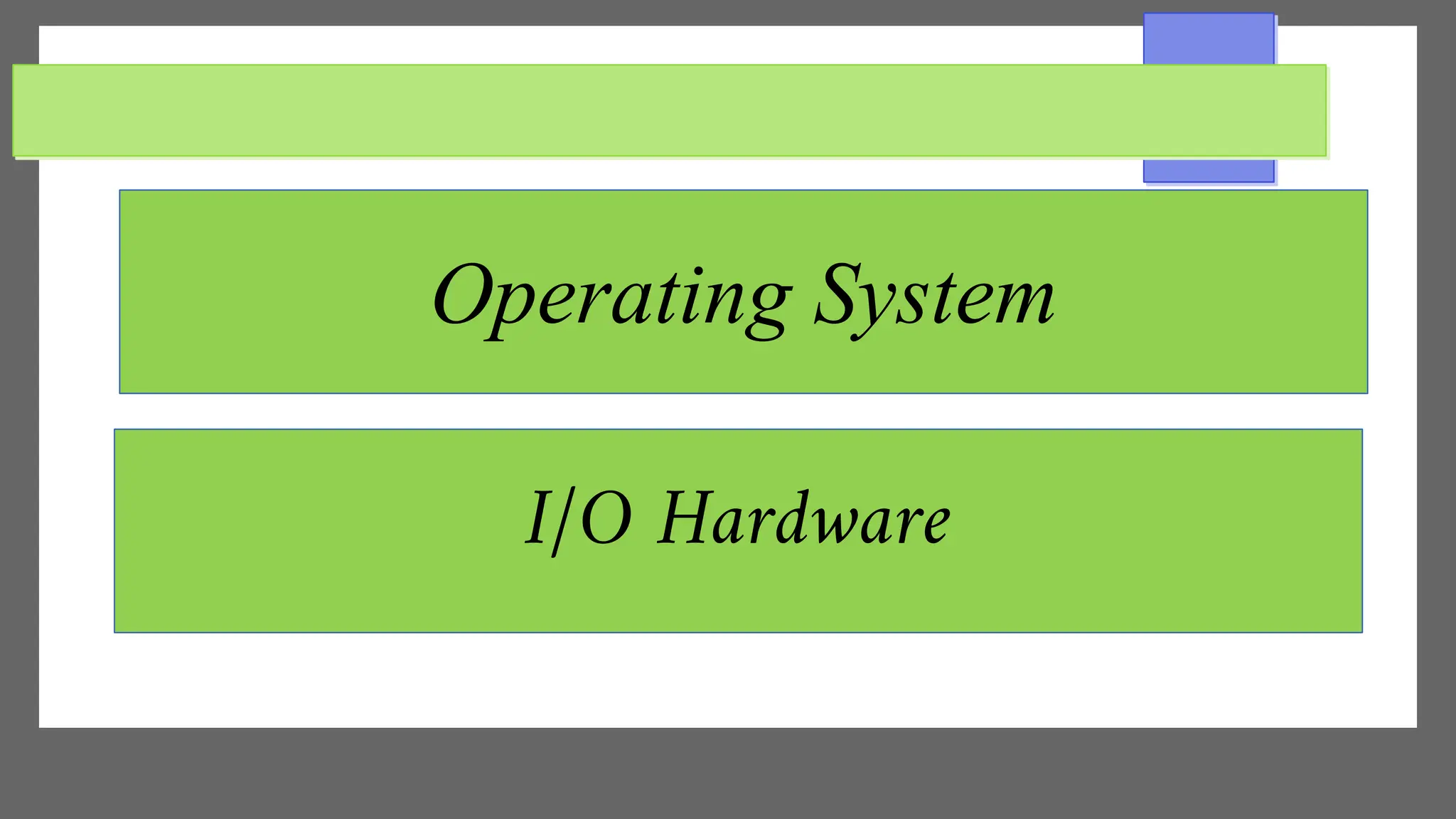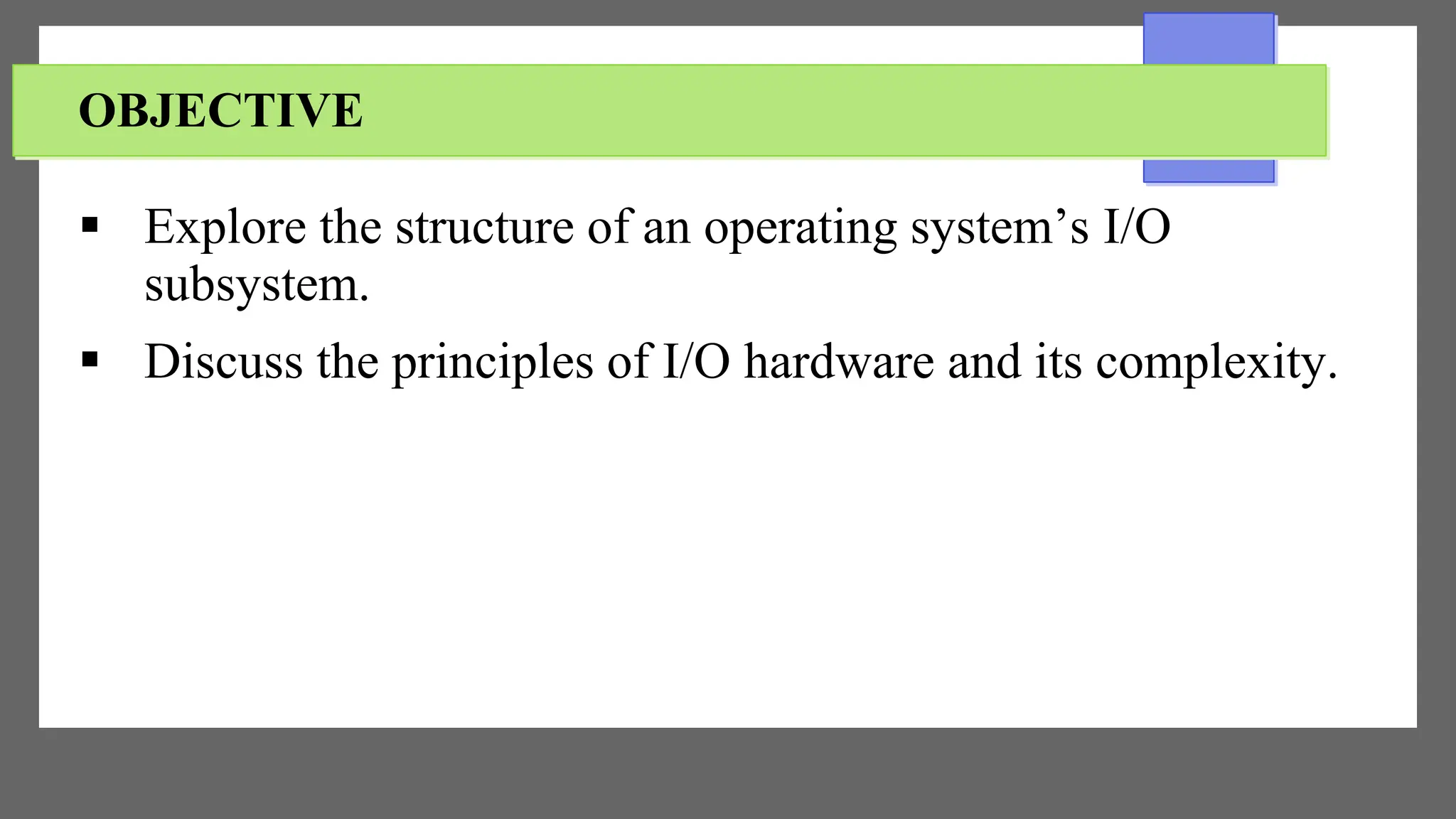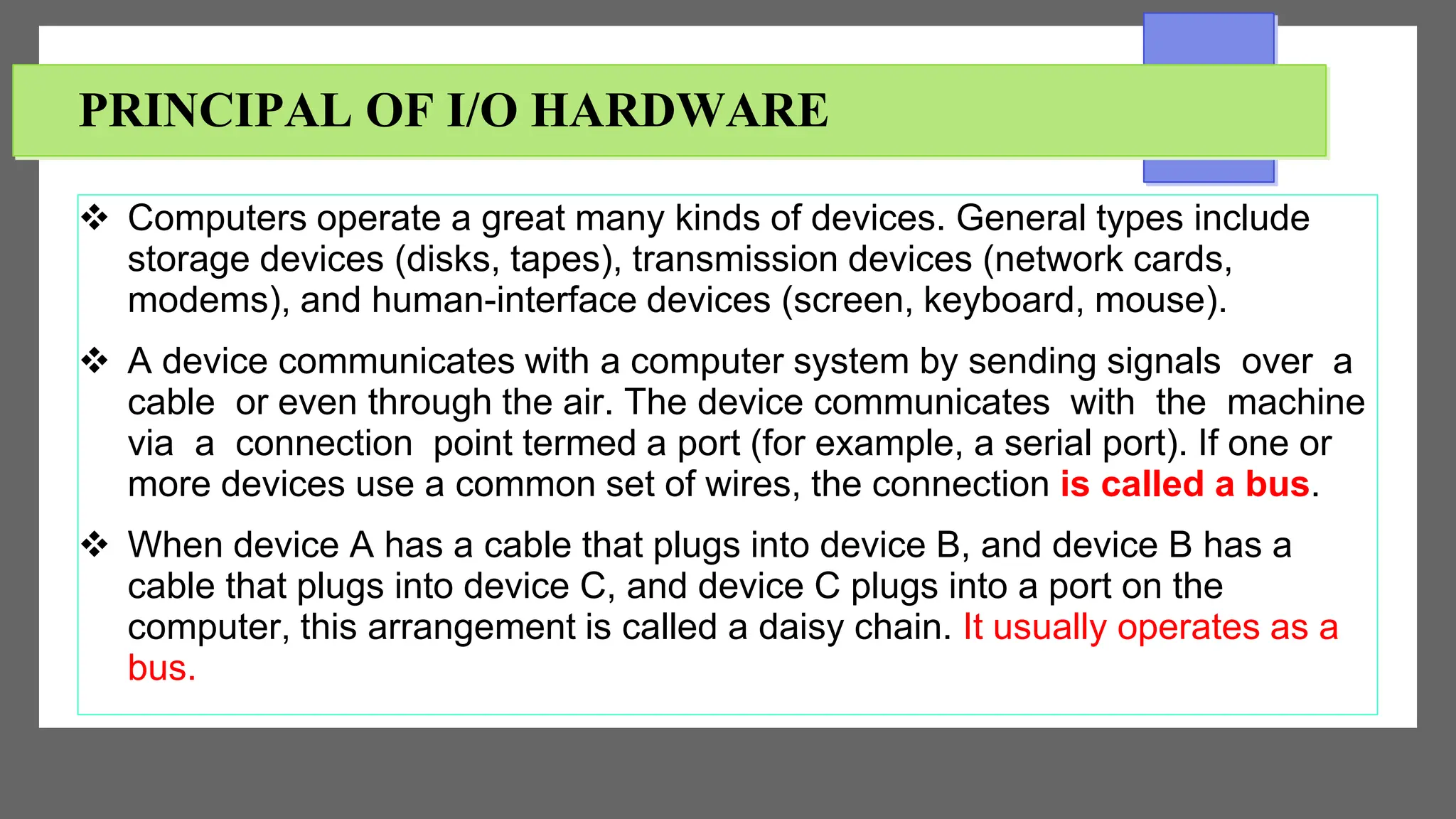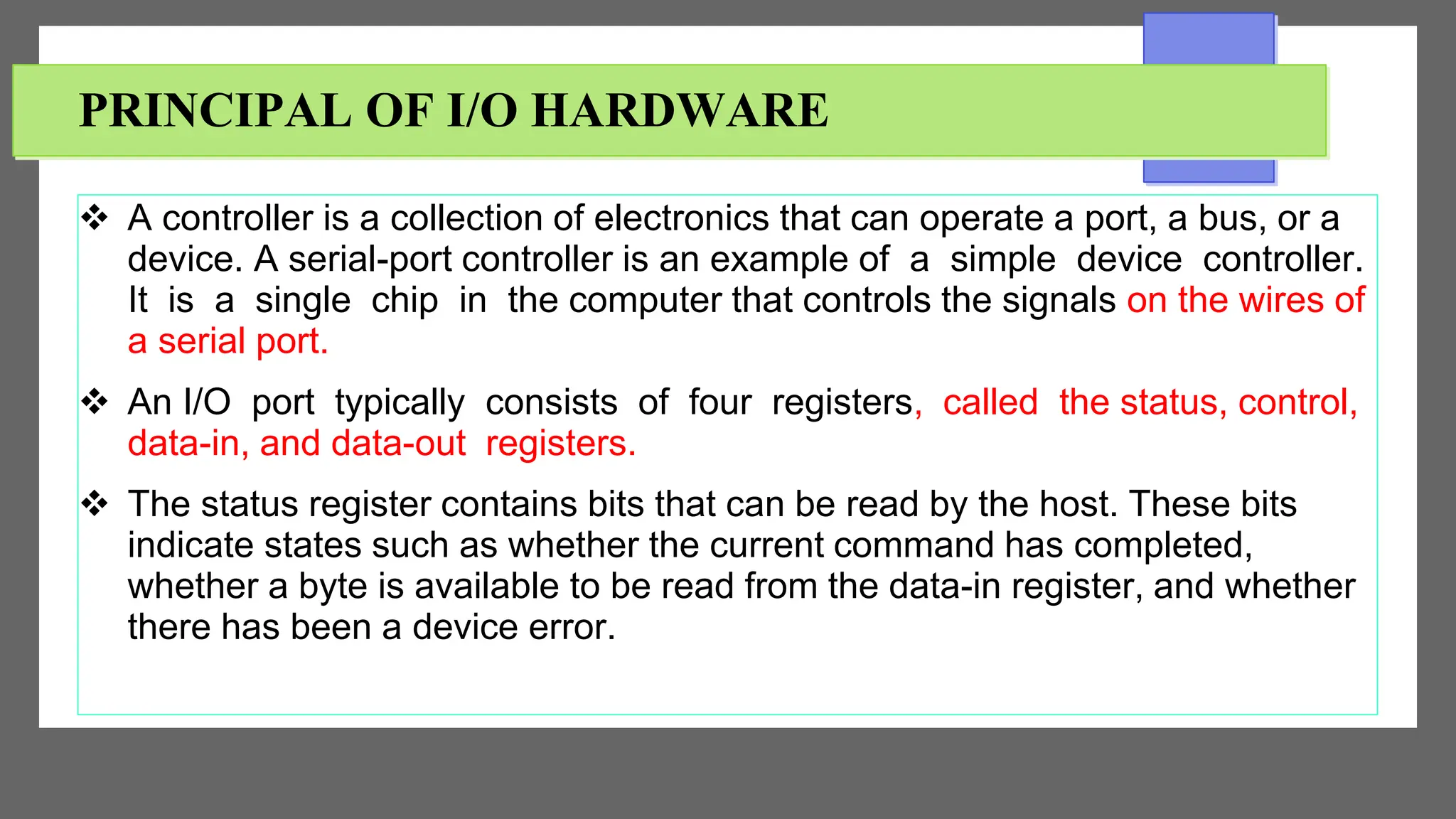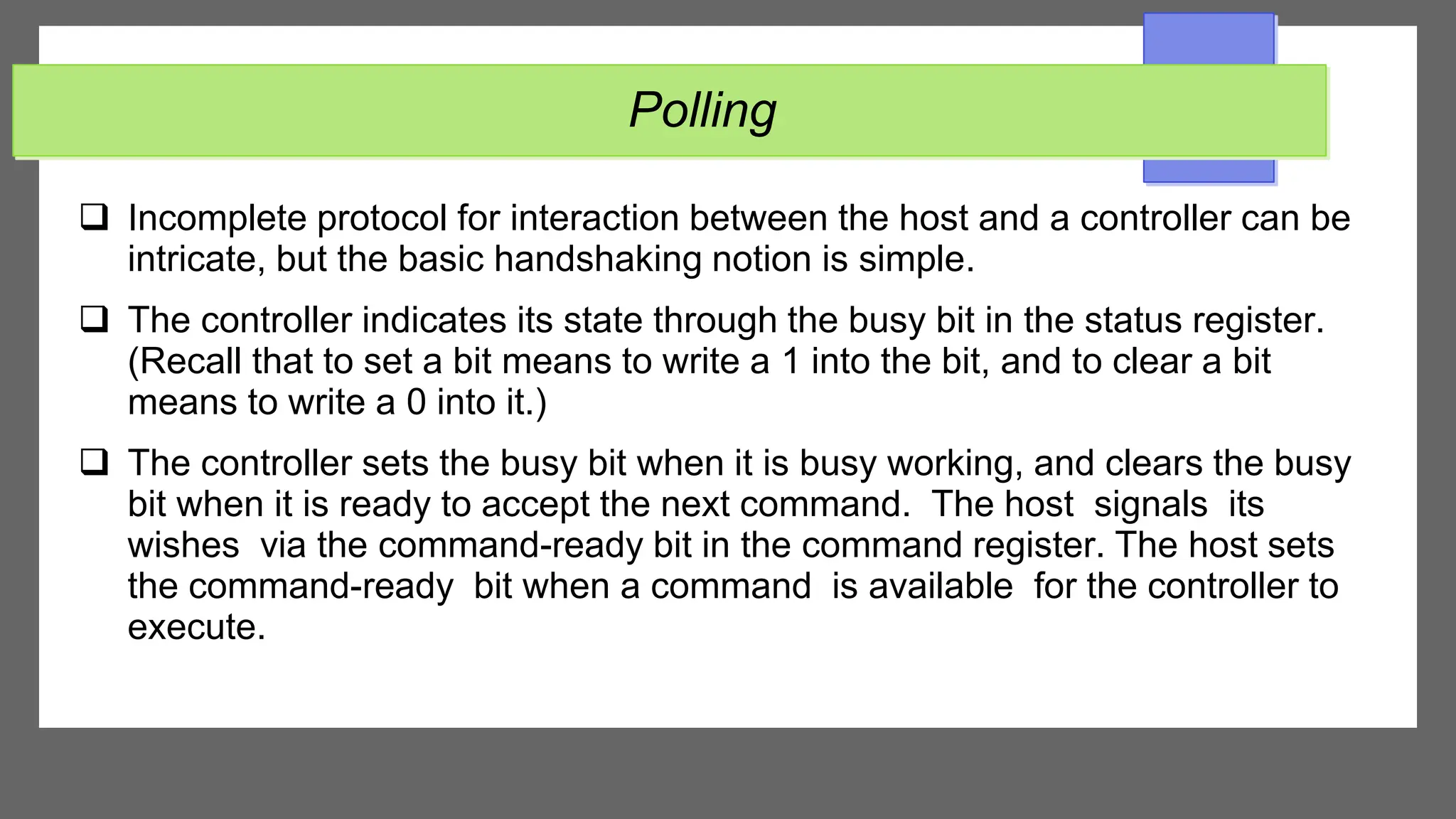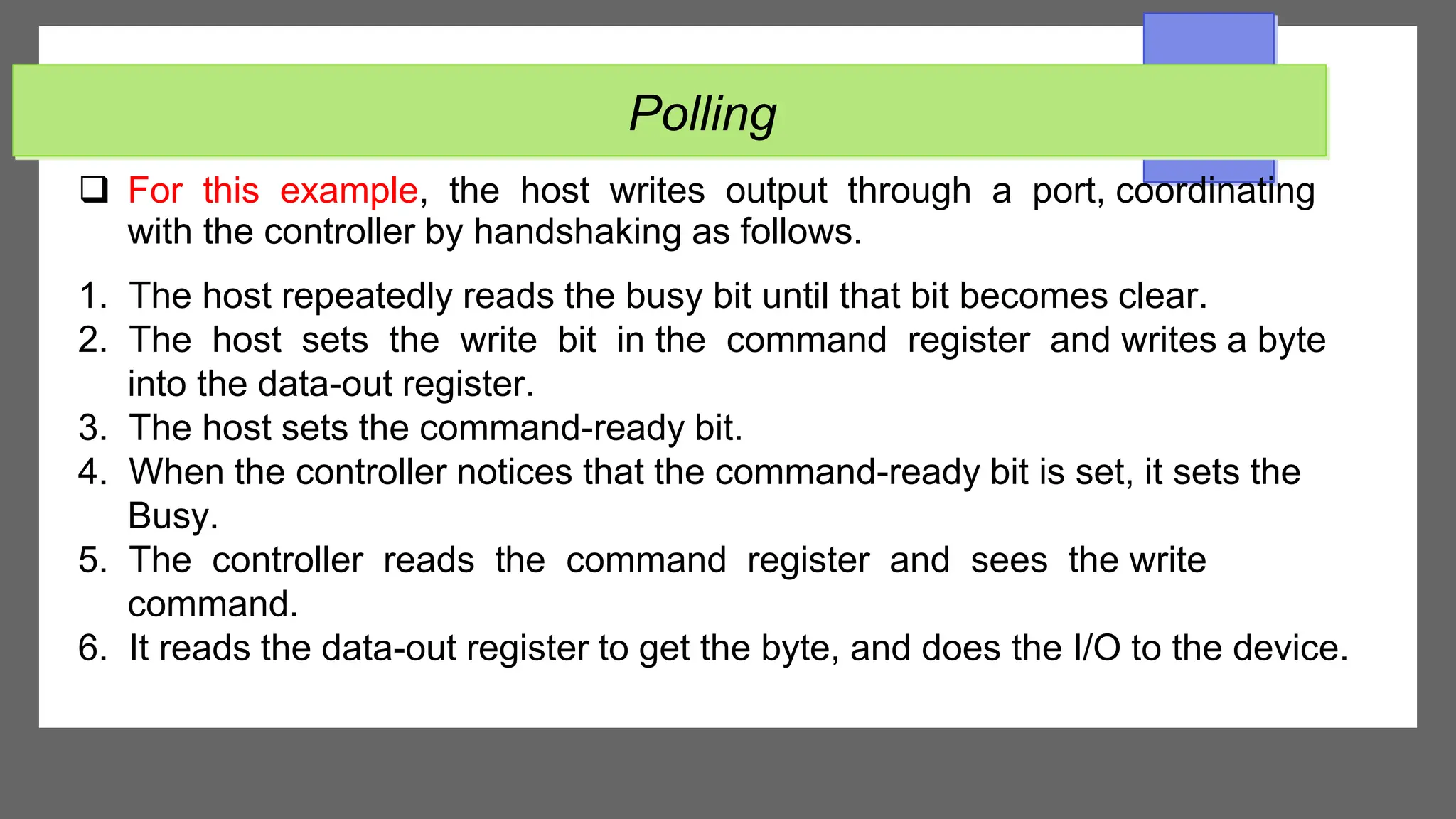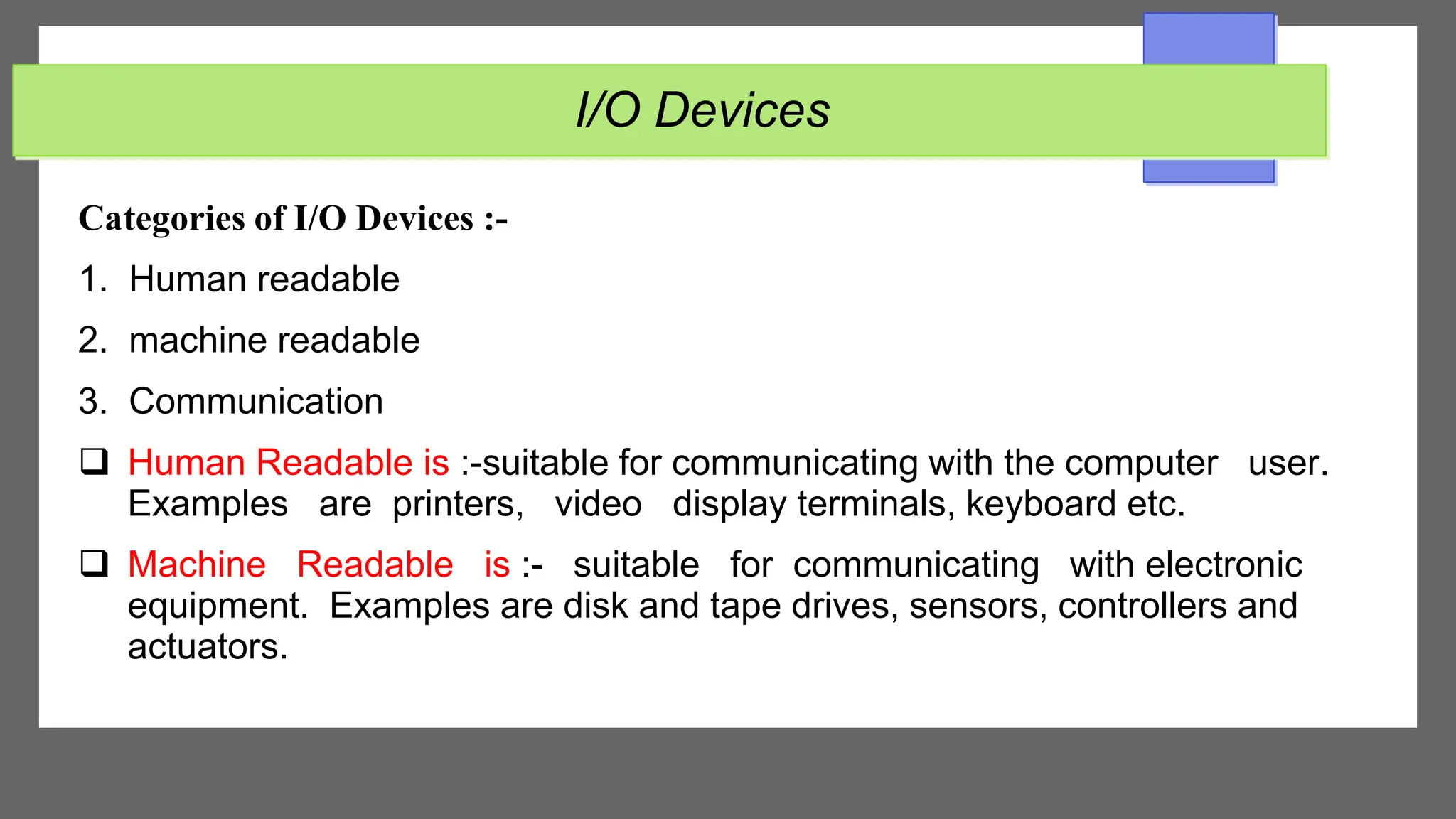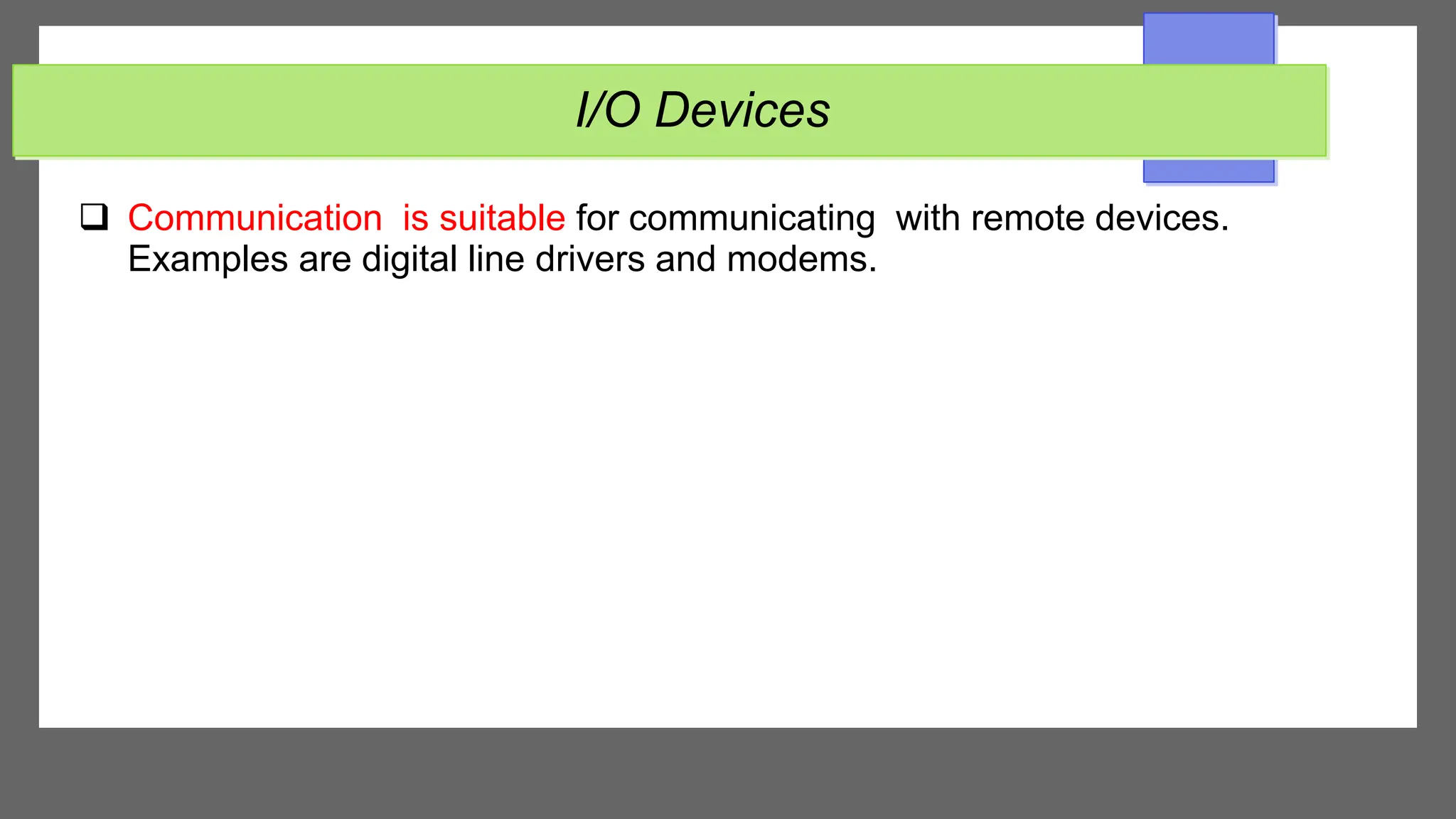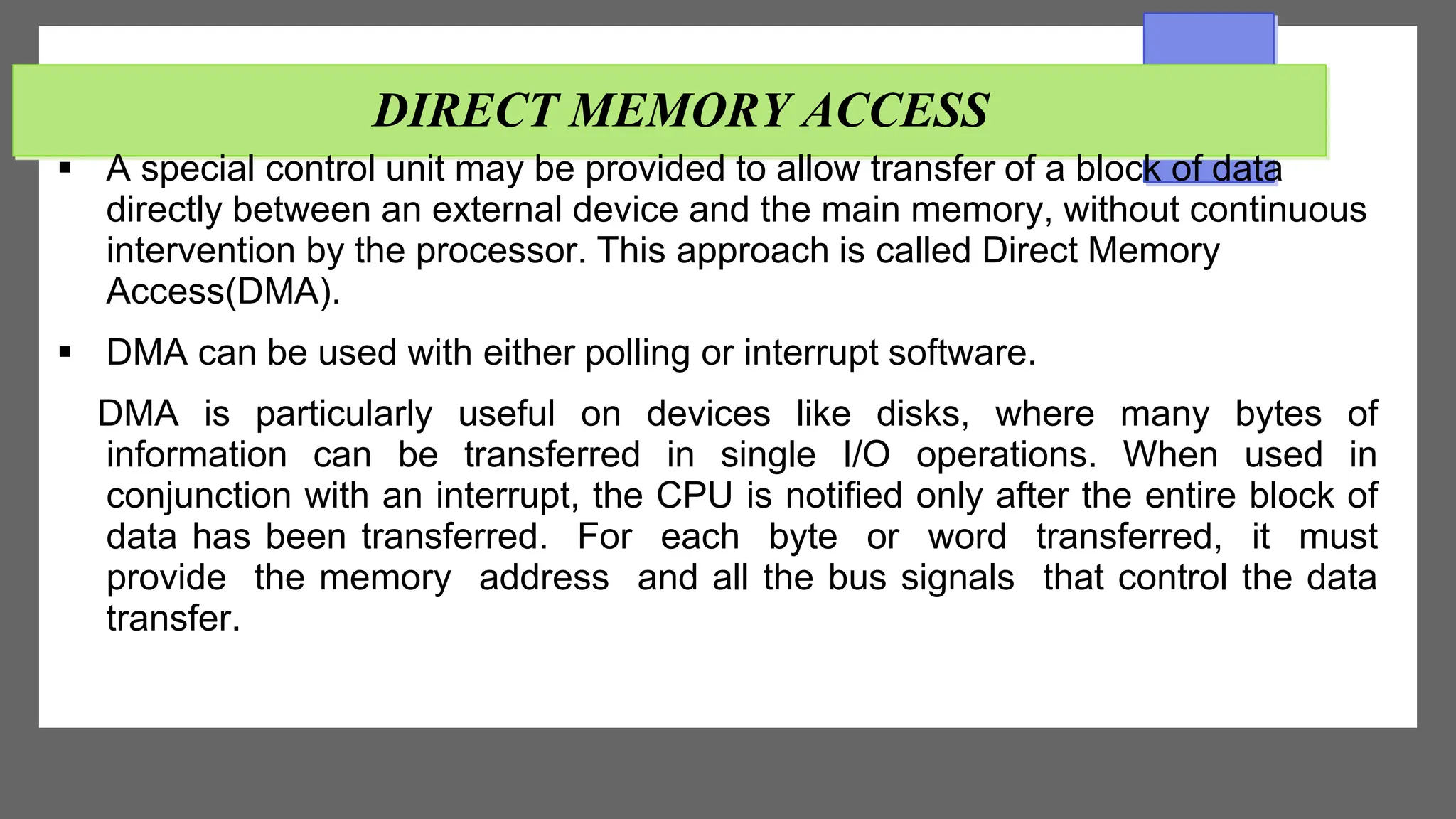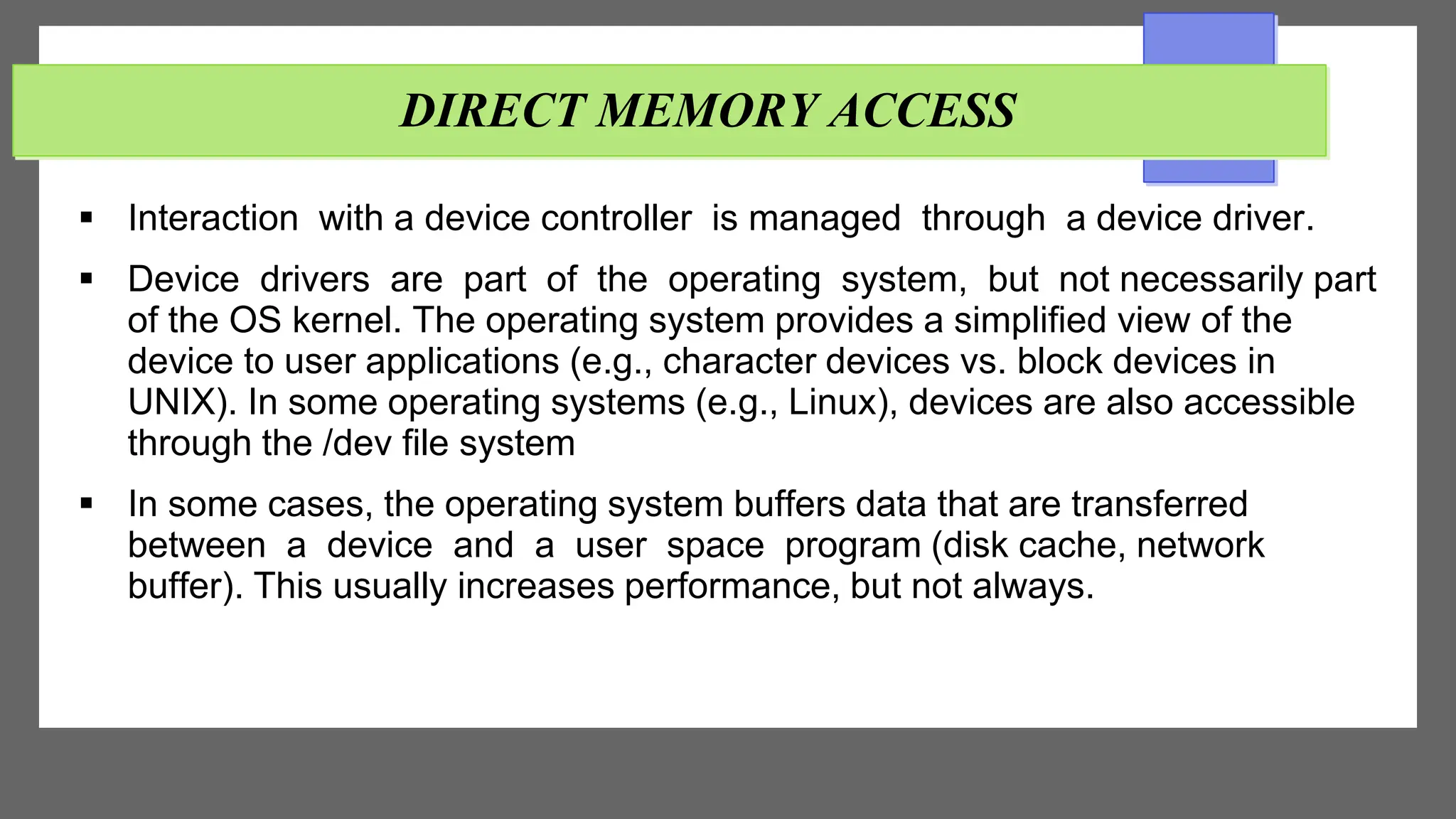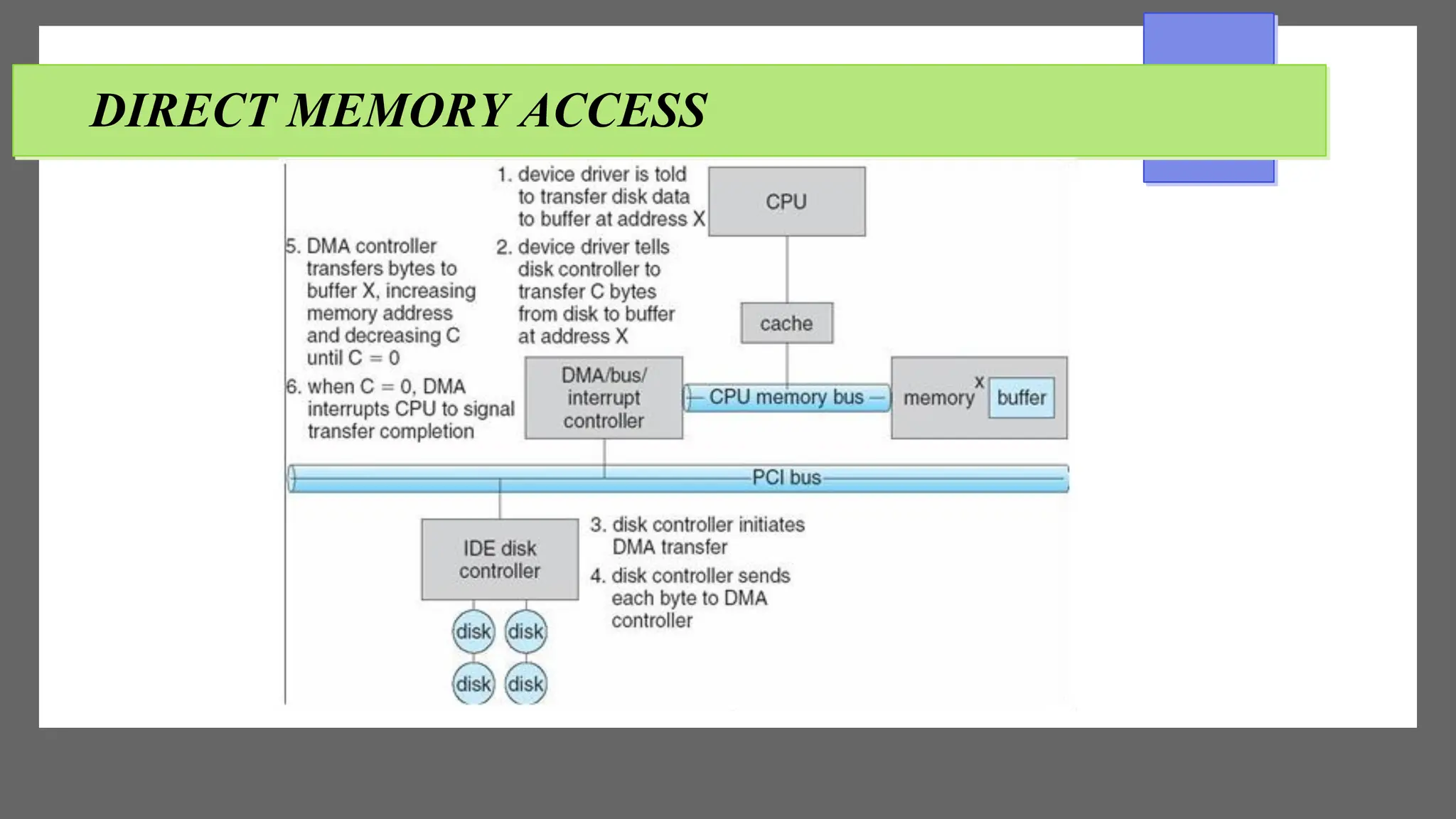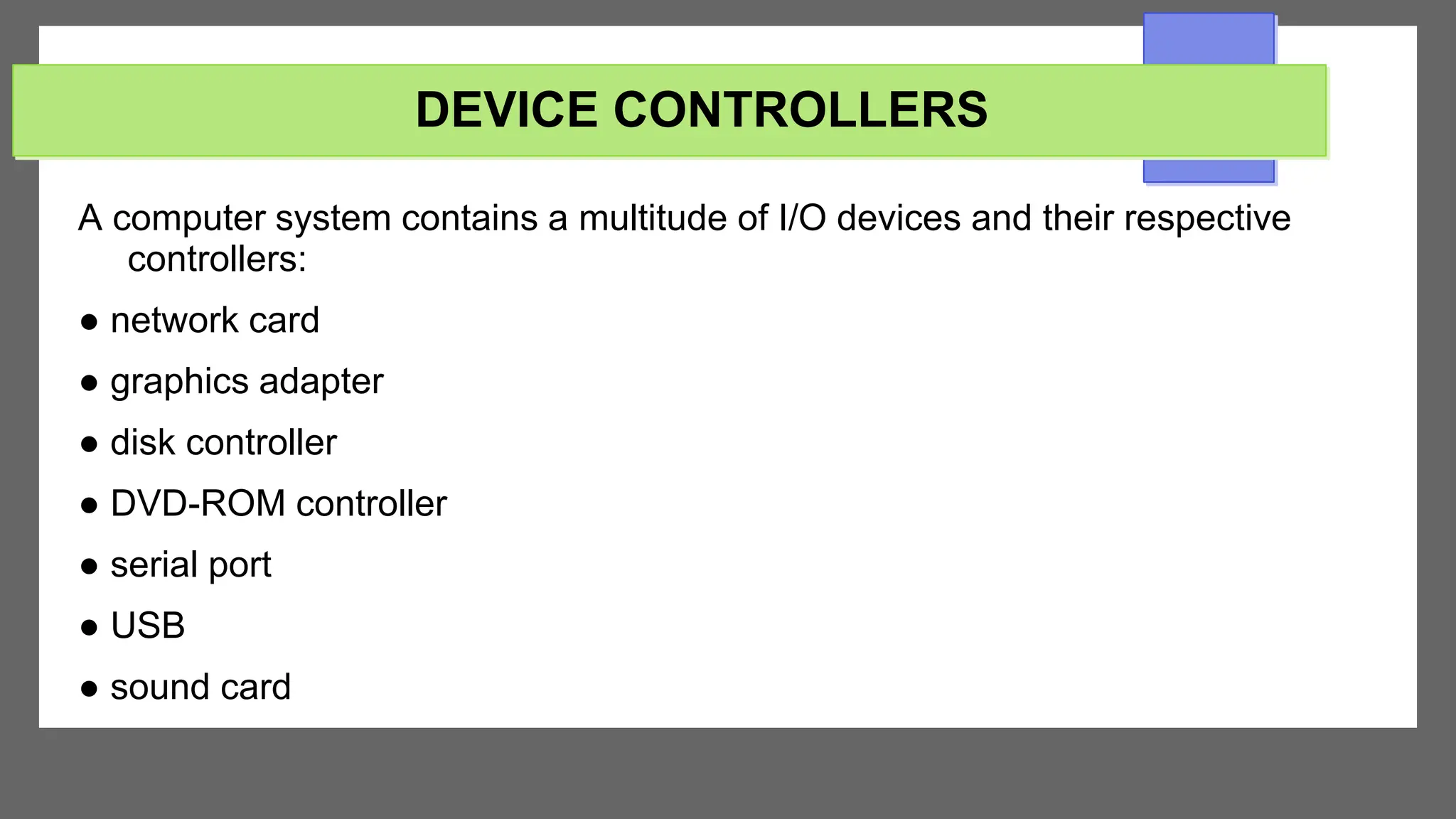The document discusses I/O hardware and operating system I/O subsystems. It covers principal of I/O hardware including device controllers and ports. It describes polling, I/O devices categories, direct memory access, and device controllers. The summary outlines the basic hardware elements for I/O, methods for moving data via programmed I/O or DMA, device drivers, system call interfaces, and kernel I/O subsystem services.
